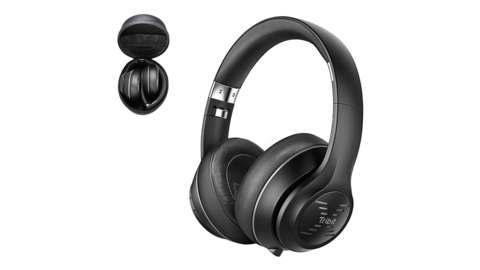
If you've been experimenting with smart home technology, you have probably considered some of the cost-saving features it offers. You may be wondering what other features you need to add to your home, as well as which ones will work best. Whether you want to control your lighting and temperature from the comfort of your couch, or automate your home to monitor activity, there are several options available. Learn about the advantages of smart home technology as well as how to set up your smart routines.
Steps to set up a smart home
A smart home is a collection of devices that are connected via Wi-Fi to a main hub, such as an Amazon Echo or Google Home. These devices are synched with each other, the home network, and other devices like alarm systems and appliances. This starter guide will help you set up a smart home. To get started, you will need to make a room-by–room list of all devices and capabilities.

Prices
Set up a smart home is expensive. The most basic smart home systems can be acquired for as little as a few hundred dollars, while more sophisticated systems can cost thousands. Costs for installing a Wi Fi network, extra lights, multiple voice assistants, and additional lighting will increase. You should factor these costs in if you're setting up a smart-home as part of a larger renovation project.
Compatibility
Compatibility is essential when setting up a smart house. Although many devices can be used together, some may not work with others. To make sure that your smart home controller works with your devices, look for a system that supports common standards, not proprietary products. Visonic and Tado are just a few examples. You might be interested in a smart-home with voice assistants. Check compatibility with your preferred voice assistant platform.
Detectors
Detectors are connected devices that detect activity in a specific area. The sensor can be connected with lighting, thermostats, and video recording. To automate your home, some sensors can be connected to other smart devices. Depending on their features, they can be configured to trigger certain actions and notify you. These sensors can also combine to make a multisensor. These sensors can detect motion, temperature, and even trigger video recording.
Routines
Once you have set up your smart house, you will be able to create several routines that control the lights and appliances. Routines make it easy to create and can be repeated many times. Your routines can be named however you like. They can be scheduled to occur on a specific schedule or triggered by voice commands. Your routine can include multiple actions and you can order them accordingly.

Security systems
When setting up your smart home, you may want to consider security systems. The security systems you install in your home are intended to protect your home against intruders. They detect motion and detect cracks in glass. Typically, the security panels will be touchscreens with cameras and glass break detection built-in. Additional security features include window and door sensors that detect when doors and windows are opened. These devices can be placed inside your home and are great for protecting valuables in places you seldom visit.
FAQ
Is PlayStation or Xbox better?
What you are looking for will determine the answer. Both of these systems can be great entertainment options. They allow you to play games from all around the world. Xbox 360, however, might be the better choice if your goal is to just play video games.
Is there any difference between a game mouse and a game trackball?
A gaming mouse is a device that connects to your computer via USB. It can be attached to either a notebook or a desktop. A gaming trackball is similar to a mouse except that it uses a ball instead of a scroll wheel.
Both can be used for controlling movement in videogames. Extra buttons can be added to some mice so that they can perform specific functions. For example, you might press the button to activate a crosshair. There are usually no additional buttons on trackballs.
Most gaming mice are designed to work well with both left-handed and right-handed people. They tend to work better for right-handers.
Because of their lack of precision, trackballs are not recommended for right-handed people.
How can I start playing blockchain games?
Blockchain technology has been around for years, but its potential hasn't been fully realized. This revolutionary technology is now available and it's time for a new industry to be created.
The blockchain game market is growing rapidly as people realize how much fun they can have while learning about this exciting new technology.
Blockchain games are growing in popularity because they allow players to explore the fundamental principles of blockchain technology without investing money.
They allow you to play your way and not be bound by any other person's rules.
What is better, PC or PS5?
The best gaming console for you will depend on what type of games you enjoy playing. A PlayStation 5 will be the best option if you are looking for an extremely powerful system. However, if you want an affordable option with great performance and features, then we recommend getting a PC.
Do I need internet access to play?
No! Many people believe that to play online games, they must connect to the internet. This is false. It's not necessary to download a game to be able to play it offline.
This feature is called "Always ON" mode. It turns the game on and automatically downloads any updates or patches that become available. This way, you won't have to worry anymore about downloading updates or patches.
What number of games can each console store?
Xbox One holds 1 TB of storage space. This is enough space to store thousands upon thousands of games. The internal memory of the PS4 is 500GB. That's enough space to play hundreds of different games.
Statistics
- Estimates range from 505 million peak daily players[10]to over 1 billion total players.[11][12] The free-to-play mobile version accounts for 97% of players. (en.wikipedia.org)
- Rural areas that are still 100% cable may continue to experience peak hour slowdowns, however. (highspeedinternet.com)
- The pay-to-play PC version accounts for 3% of players. (en.wikipedia.org)
- But if he shows something like a 4, 5, or 6, you can stand on pretty much anything because it's likely he will go on to bust. (edge.twinspires.com)
External Links
How To
How to make money by streaming videogames
Streaming video game platforms like Twitch, YouTube Gaming, Mixer, AzubuTV, Ustream, Dailymotion, etc., are becoming increasingly popular among users around the world. These platforms are popular for their ability to stream live video games at low prices.
The biggest benefit of streaming videogames is their ability to be played by people who don't have the console. The streaming video games can be watched by anyone without the need to purchase the console. Some games, like controllers and joysticks, require special hardware in order to work properly. Streaming video games eliminate this requirement and make it easier for everyone to enjoy the games.
There are many ways to make money from your videos. Sponsorships, subscriptions or donations can all be used to make money. There are many types to choose from when advertising online. These include banner ads or pop-up ads, interstitial advertisements, preroll ads or postroll ads. Overlay ads and rich media ads. Some methods are more effective than other. Advertising can make you money, but there is no guarantee.
First, understand the platform to make money streaming video games. Once you understand the platform, then you can choose which advertising model works best on your channel. Once you've decided on the best type of advertisement, you can begin implementing it in your channel.